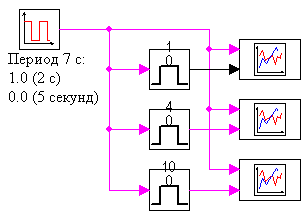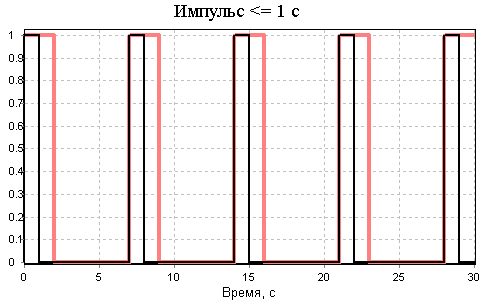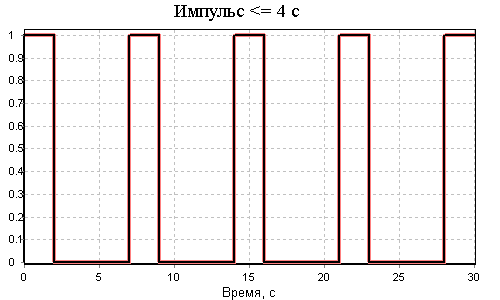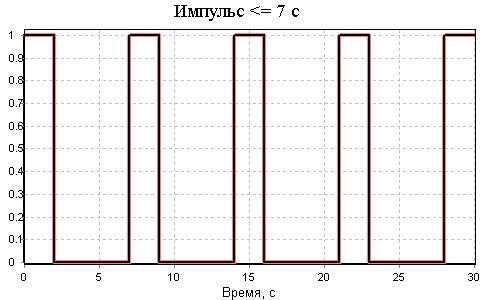The pulse with a duration of no more than the specified
 |
 |
| Vectorized | C | |
in the palette |
on the schematic |
It forms a pulse of a given duration and no more when the input changes from zero to one. Algorithm of the block operation: if the input signal has changed from zero to one (or to non-zero value), the block forms a logical unit at the output for a specified time. In this case, if the input signal disappears before the predetermined pulse duration (became equal to 0), the block takes this into account and stops supplying the pulse at the output.
Inputs
- B01 - block input.
Outputs
- B0 - block pulse output.
Properties
- Pulse duration - time during which the block generates a logical unit at the output. The pulse duration can be less than a preset one, when the input signal disappears.
- Pulse duration is set via - the method of setting the pulse duration: via the additional input or via the block parameter "Pulse duration".
Parameters
- Duration - pulse duration.
- Time until the timer stops - time until the pulse timer stops.
Examples of block operation
Let's consider three blocks with pulse durations not more than 1, 4 and 10 seconds. At the same time, the same signal of the "Square signal" type with a full period of 7 seconds (the duration of the first half-period is 2 s, the second half-period is 5 s) will be input to the blocks. The calculation time is 30 s:

Let's consider the plots of the received impulses at the output from the blocks (pink plot - input signal of "Square signal" type, black plot - impulse):



As can be seen from the plots, the block generates pulses of no more than a given duration and only as long as the input signal has varied from 0 to 1 and remains equal to 1. The last two plots coincide, although the set pulse duration is different in the blocks.

Let's consider the plots of the received impulses at the output from the blocks (pink plot - input signal of "Square signal" type, black plot - impulse):



As can be seen from the plots, the block generates pulses of no more than a given duration and only as long as the input signal has varied from 0 to 1 and remains equal to 1. The last two plots coincide, although the set pulse duration is different in the blocks.